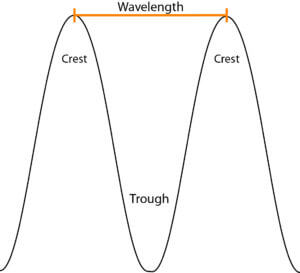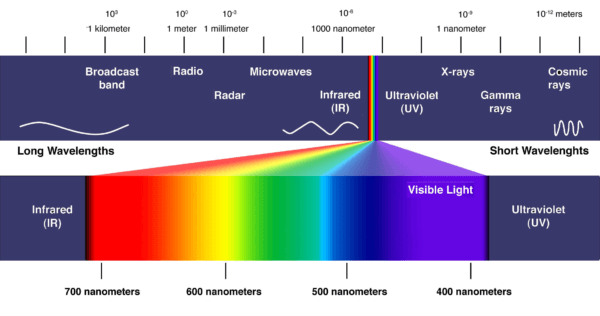
To achieve optimal results with ONCE LED lighting systems, the visible spectrum—electromagnetic radiation is light we can see—should first be understood. Light has similar behavior to an ocean wave. As a result, light is characterized by 2 variables: wavelength and intensity. Wavelength is the distance between the two peaks of a wave and intensity refers the number photons hitting given surface area.

The visible spectrum is a small fraction of the many types of electromagnetic radiation that exists. The wavelengths visible to the human eye fall between around 400-700 nm. The longer wavelengths beyond the visible spectrum include infrared radiation, microwave radiation and radio waves. The shorter wavelengths beyond the visible spectrum include, ultraviolet radiation, x-ray and gamma radiation.

Ultraviolet (UV) light is an electromagnetic radiation not visible to humans. It has shorter wavelengths than visible light but longer wavelengths than X-ray radiation. UV light covers wavelengths from 100 to 400 nm and is divided into three subcategories:
Both UVA and UVB radiation pass through the earth’s atmosphere, reaching the surface, but UVC radiation is mostly absorbed by the ozone layer, never completely reaching land.